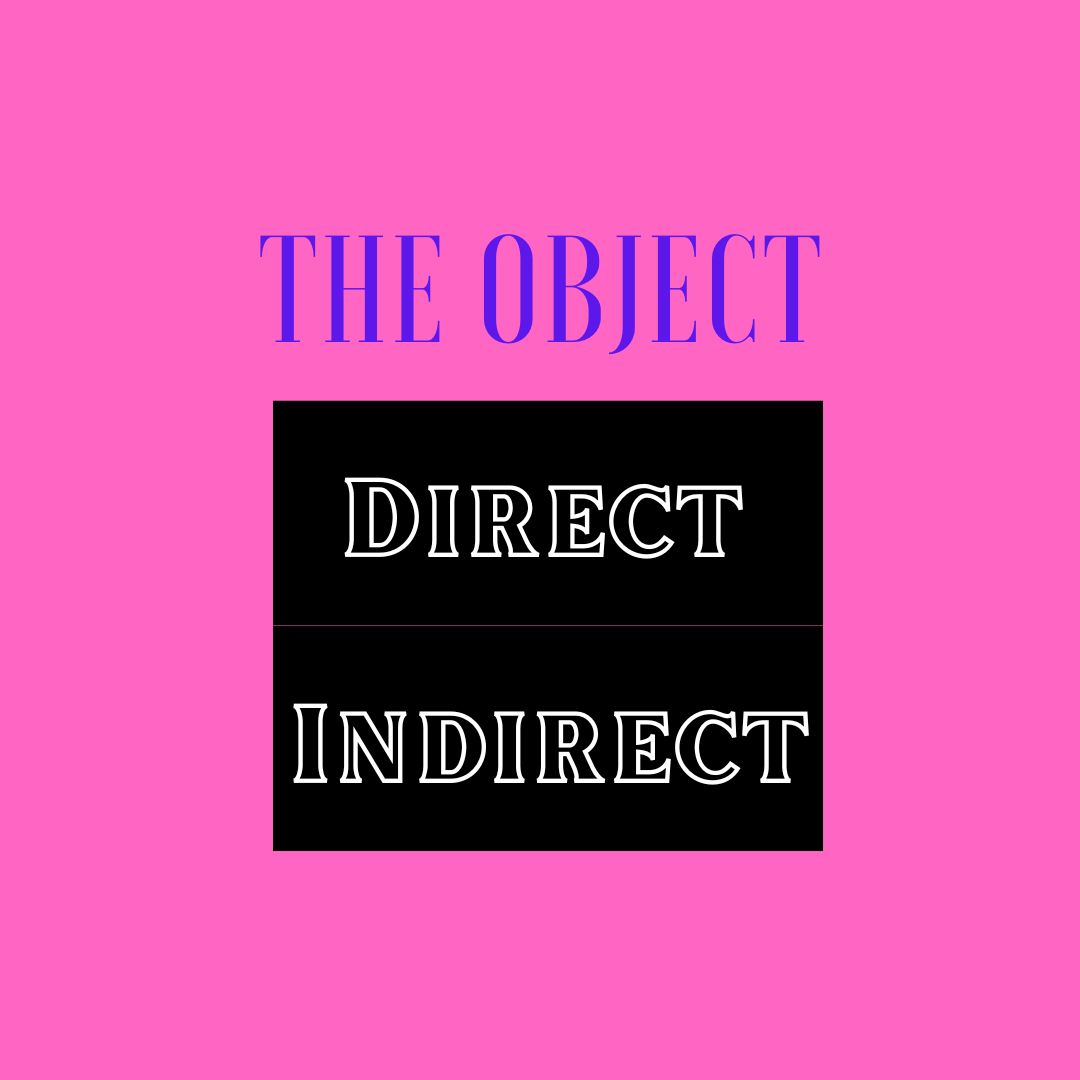What is The Object of a Sentence?

The object of a sentence in English
The object is a subsidiary part of a sentence that receives the action of the verb or shows the result of that action.
It answers questions such as whom:? what? to whom? by whom? about what? to whom?
These questions help identify and clarify the role of the object in relation to the verb.
There are two main types of objects:
Direct Object:
Answers the questions whom? or what? concerning the action of the verb.
It directly receives the action of the verb.
For example: She read a book.
Direct object: a book
Indirect Object:
Answers the questions to whom? or for whom? or about what? concerning the action of the verb.
It indicates the recipient or beneficiary of the action.
For example: She gave him a gift.
Indirect Object: him
Direct object: a gift
The indirect object receives the direct object or benefits from the action.
An indirect object can be prepositional or without a preposition.
Here are examples of both:
Indirect Object without a Preposition:
He gave the student a book.
Indirect Object with a Preposition:
She has received a letter from her friend.
Direct objects in different forms:
A direct object can take various forms, including a noun, a pronoun, a numeral, an infinitive, or a gerund.
Here are examples of each:
Noun as Direct Object: She bought a car.
Pronoun as Direct Object: I saw him at the mall.
Numeral as Direct Object: I have read both books. I like the first better than the second.
Infinitive as a Direct Object: She wanted to learn.
Gerund as a Direct Object: He enjoys swimming.
In the fourth example, to learn is an infinitive phrase acting as the direct object, and in the fifth example, swimming is a gerund acting as the direct object.
Indirect Objects:
Transitive verbs, such as to give, to send, and to show, can take both direct and indirect objects.
The indirect object often answers the question: about whom? about what? with whom? or for whom? and typically precedes the direct object.
The indirect object is expressed by a noun in the common case or a pronoun in the objective case.
Here are examples:
By a noun in the common case:
She gave the child a toy.
By a pronoun in the objective case:
He showed me the new painting.
The prepositional Indirect object:
Prepositional objects can follow many verbs and adjectives, providing additional information about the action or state.
They answer questions such as about what? about whom? with whom? for whom?
The prepositional indirect object can be expressed by a noun with a preposition, a pronoun with a preposition, or a gerund with a preposition.
When there is a direct object in a sentence, the indirect prepositional object usually comes after it.
Here are examples:
Noun with Preposition as Prepositional Indirect Object:
She is interested in science.
Pronoun with Preposition as Prepositional indirect Object:
They are fond of him.
Gerund with Preposition as Prepositional Indirect Object:
She apologised for interrupting.
Prepositional indirect object after direct object:
He gave a gift to his sister.
What is The Object of a Sentence?
Subject-Verb Agreement in English
What is a predicate? Predicate Types
Subject of a Sentence. Types for definition